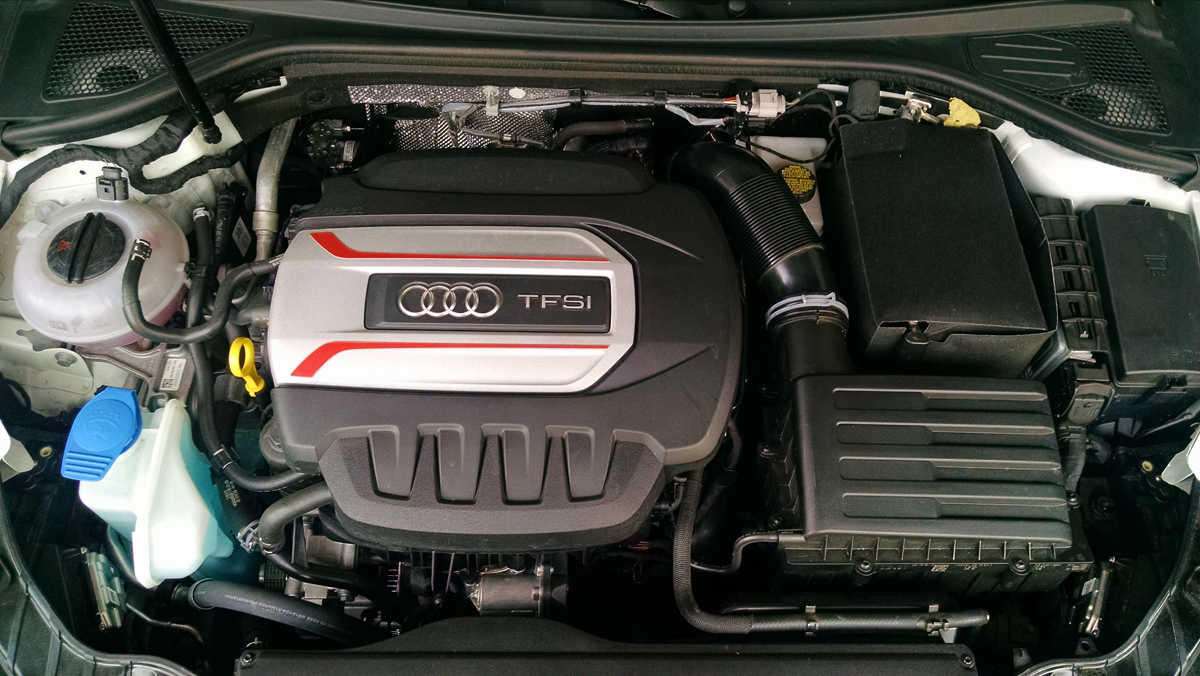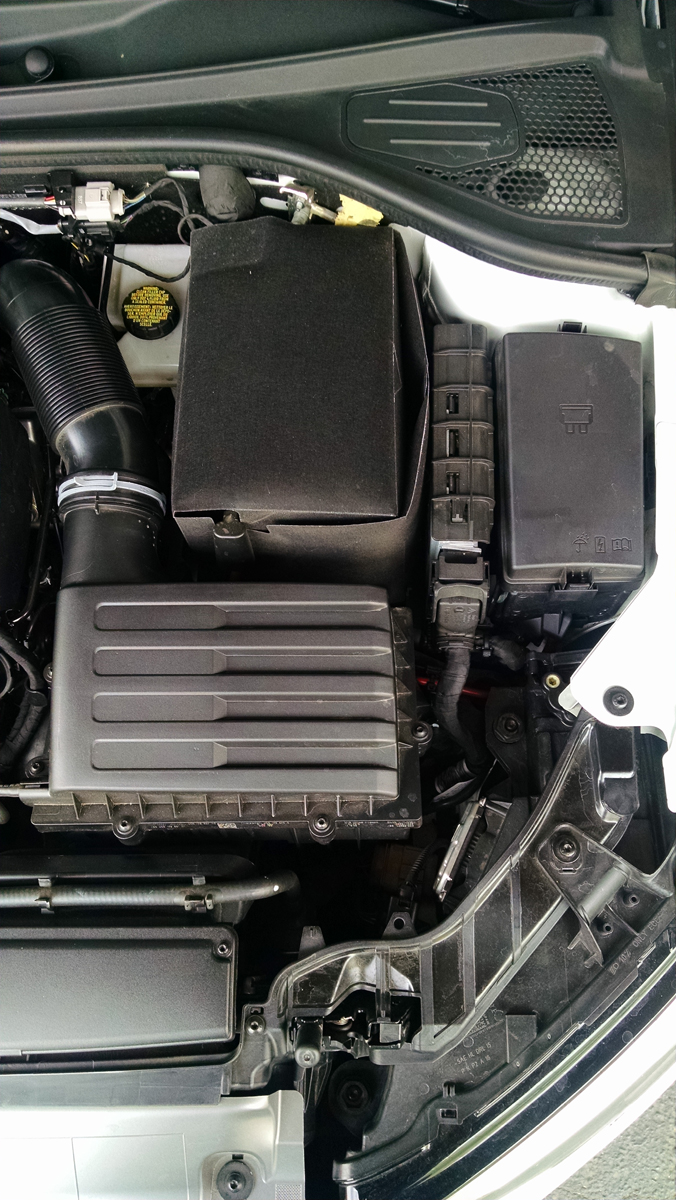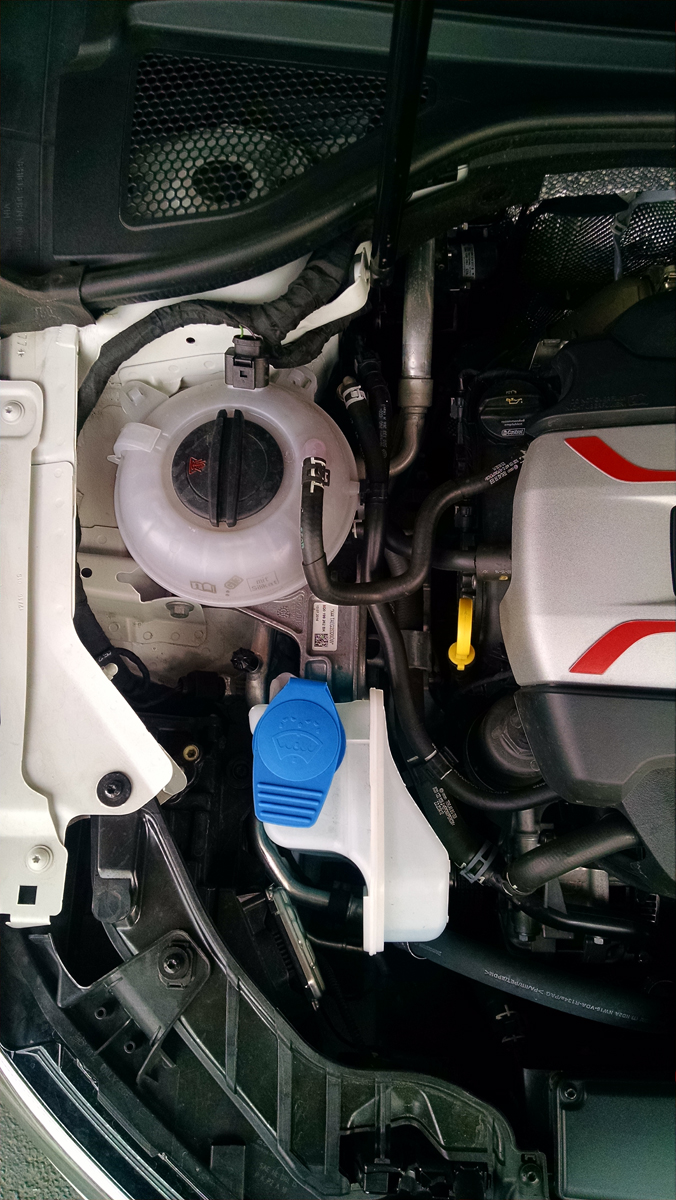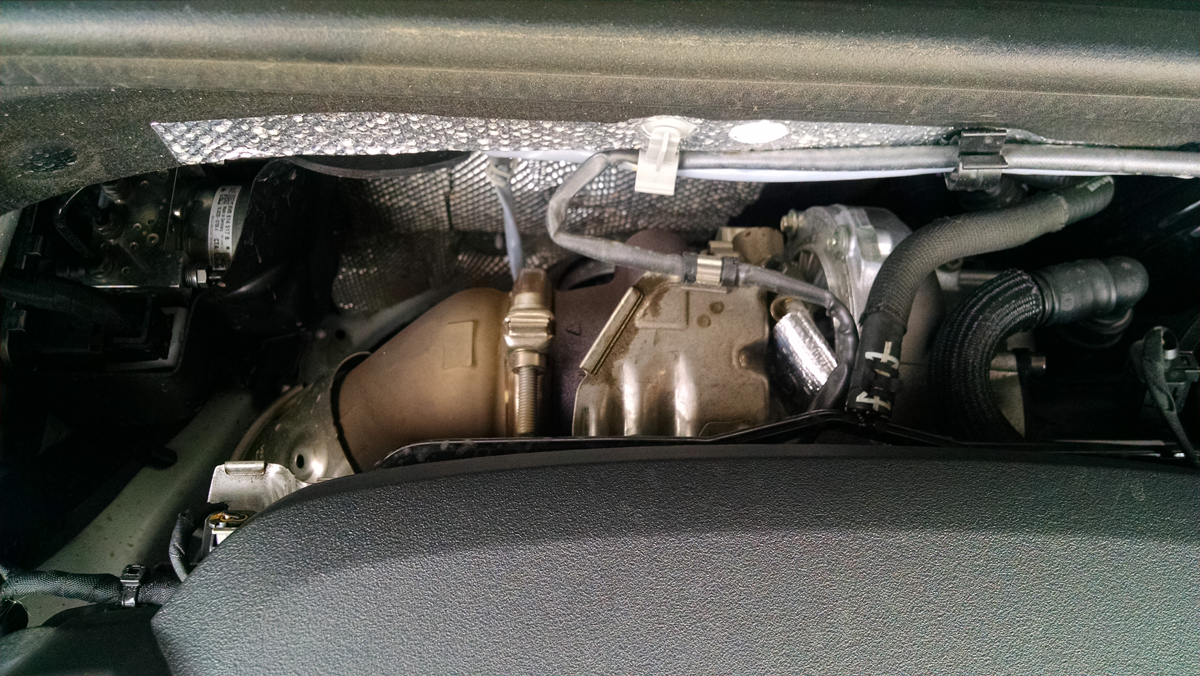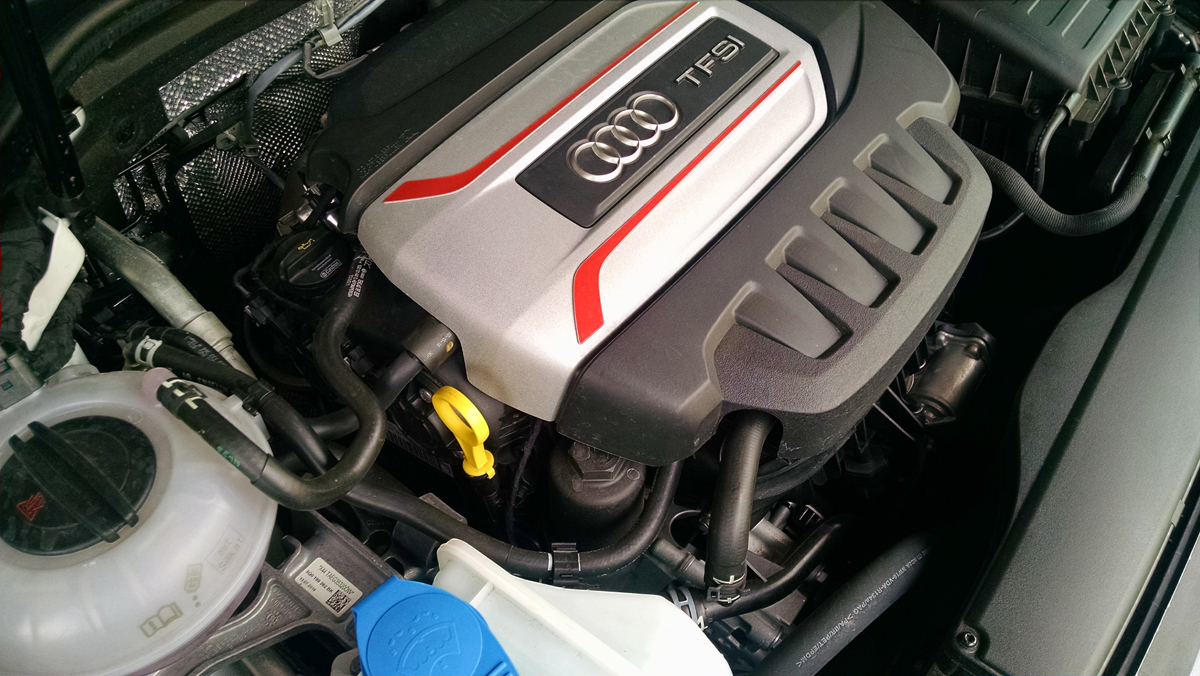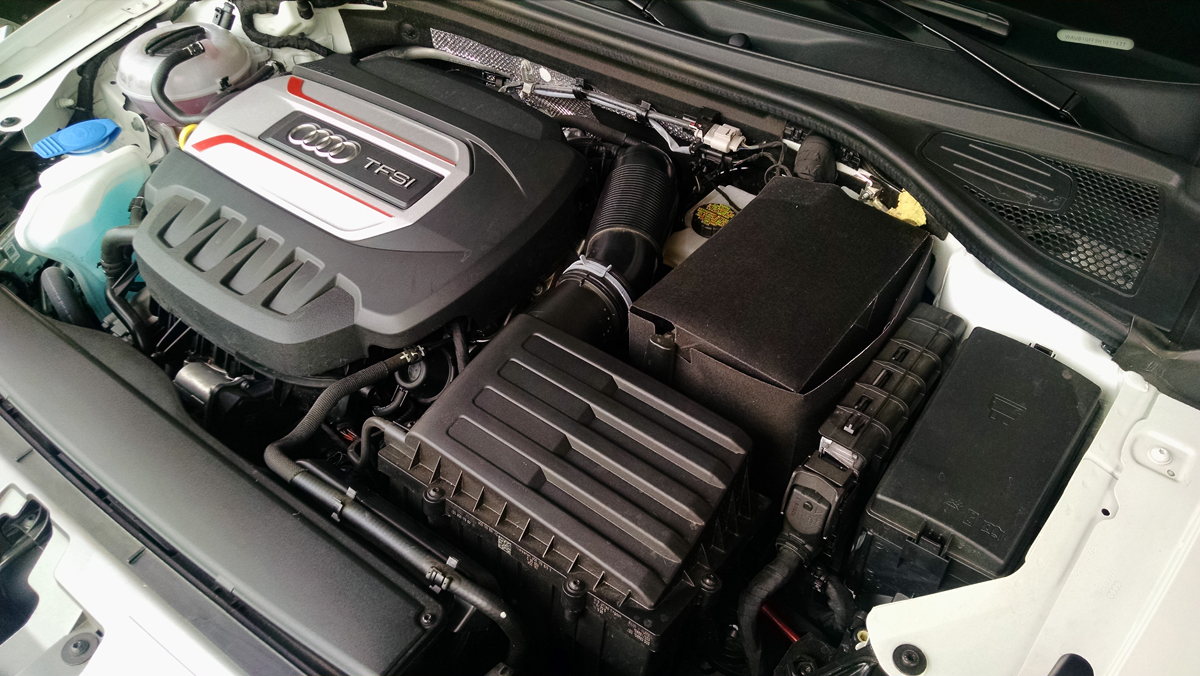Under the hood of the Audi A3 as well as the Volkswagen Golf R we get in North America is the high-output version of the company’s 2.0-liter turbocharged four-cylinder EA888 engine.
In both cars, it cranks out 292 horsepower at 5,500 rpm and 280 pound-feet of torque starting at 1,800 rpm and remaining flat through 5,500 rpm. While related to the 2.0-liter E888 turbo found in other Audi and VW products, it differs in a few key areas to achieve its higher output.
Chiefly among the upgrades are a unique cylinder head with a higher flow. The aluminum cylinder head features dual-overhead cams both with variable timing capability and two-stage variable valve lift for exhaust valves.
The exhaust manifold is cast into the the head, which allows exhaust flow to be water cooled which lowers temperatures by up to 160 degrees. This allows for the turbocharger to bolt directly to the head for a shorter path but lower temperatures also allow for a more aggressive engine tune.
A larger turbocharger compressor and more robust pistons also help the engine reach its high output here and though it still has an iron block, saving 72 pounds is athin-wall casting that allows sections of the block to be less an an eighth of an inch thick.
Keeping it all balanced and refined in its character at this tune are two chain driven balance shafts that offset the vibrations and oscillations of the main rotating assemblies.
Following the air flow, the intake charge comes in through a wide intake plenum across the radiator support them into a filter box up front on the driver side. From there it heads over to the turbocharger at the rear of the engine easily seen from above.
From there it travels up front to an air-to-air intercooler ahead of the radiator down below the front bumper and then up to a drive-by-wire throttle body and composite intake manifold at the front of the engine.
There it’s mixed with fuel from direct-injection, injectors hidden down below that plastic intake manifold. Injecting the fuel directly into the cylinders, the system operates at extremely high pressures of 2,900 psi to assure optimum atomization.
In spite of all the high tech, servicing the engine is actually pretty straight forward in spite of the fact this is one tightly packed engine compartment.
This starts with the air filter right up front, though getting into it dues require some tools. Next to that is the ECU and main fuse block. Behind those the battery, neatly wrapped in a thermal jacket. Reaching and checking the brake fluid just to the left of the battery.
On the passenger side neatly grouped is the coolant reservoir and the windshield washer fluid. The oil fill cap, and the oil dipstick are on top of the engine at the passenger side and the oil filter is also convenient to the top side for changing too.

